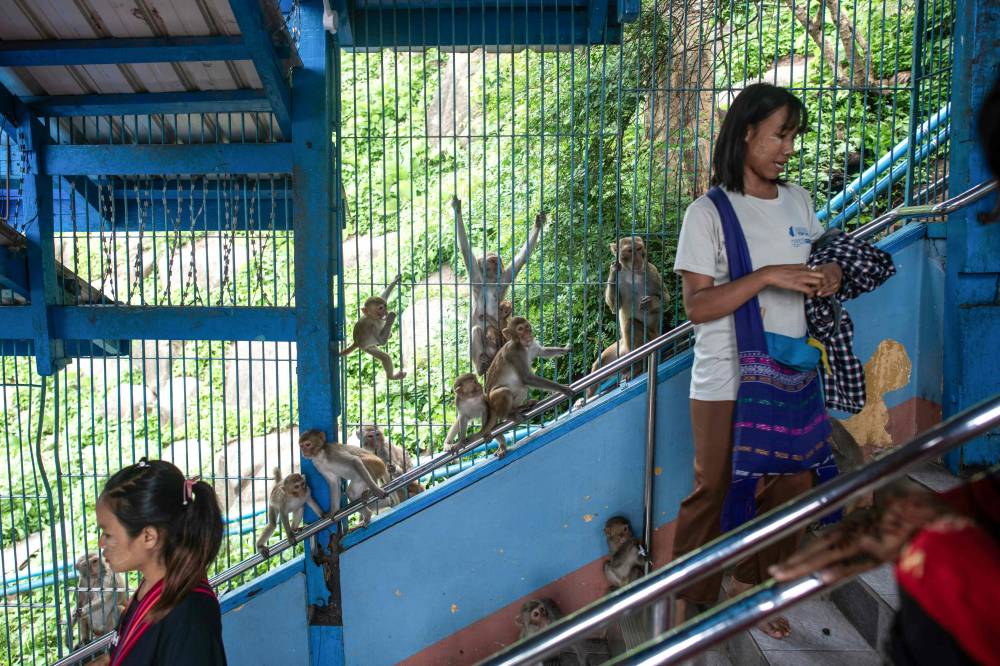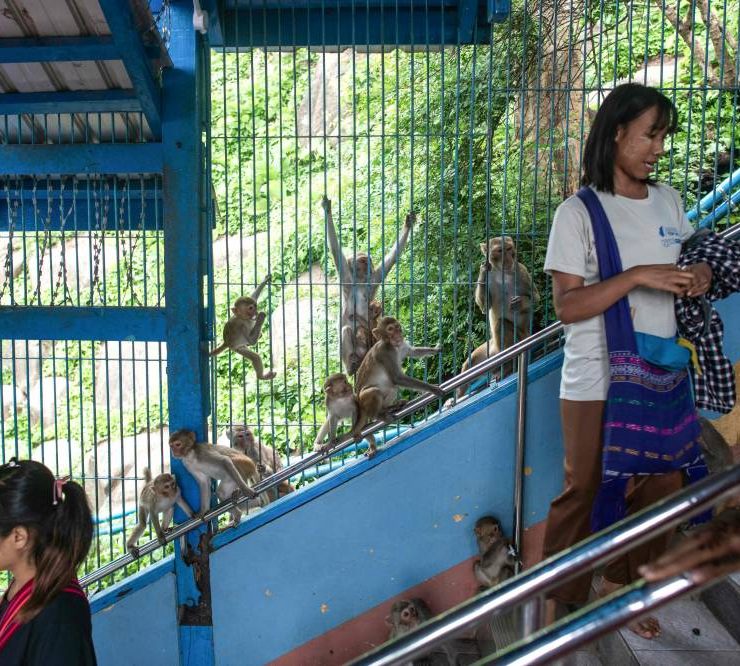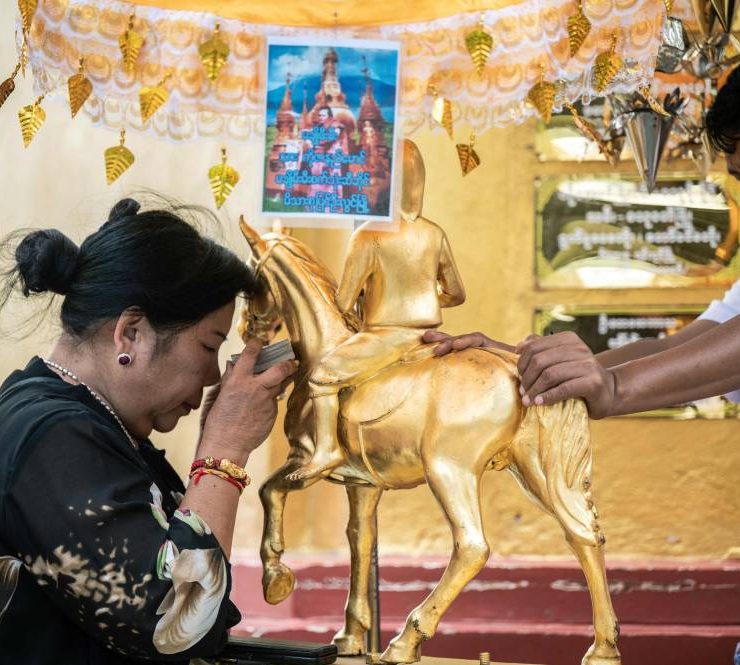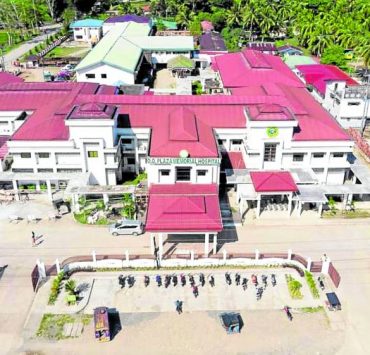War in Myanmar heartlands silences volcano shrine


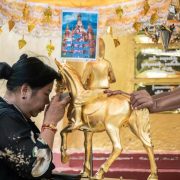

War in Myanmar heartlands silences volcano shrine
This photo taken on July 7, 2024 shows a woman feeding monkeys on Mount Popa in central Myanmar's Mandalay Region. The plains surrounding Mount Popa are home to the Bamar ethnic majority and were largely untouched by decades of previous conflict between the military and minority armed groups in the remote jungles and hills. Now the region of rolling fields of sesame, pulses and beans -- studded with the golden spires of Buddhist pagodas -- is a battle zone. (Photo by Sai Aung MAIN / AFP)
War in Myanmar heartlands silences volcano shrine
This photo taken on July 7, 2024 shows a woman praying at a golden rider statue during a visit to Mount Popa in central Myanmar's Mandalay Region. A shrine perched on an extinct volcano in Myanmar once thronged with the bustle of pilgrims praying to flower-eating spirit Popa Maedaw, but civil war has cut the complex off from the faithful. Now, the prayers have fallen silent at the Taung Kalat shrine, the plains around it a battle zone and the faithful mostly blocked from access by fighting and checkpoints manned by all sides in the conflict. (Photo by Sai Aung MAIN / AFP)
War in Myanmar heartlands silences volcano shrine
This photo taken on July 7, 2024 shows a general view of the Taung Kalat Buddhist complex on Mount Popa in central Myanmar's Mandalay Region. A shrine perched on an extinct volcano in Myanmar once thronged with the bustle of pilgrims praying to flower-eating spirit Popa Maedaw, but civil war has cut the complex off from the faithful. Now, the prayers have fallen silent at the Taung Kalat shrine, the plains around it a battle zone and the faithful mostly blocked from access by fighting and checkpoints manned by all sides in the conflict. (Photo by Sai Aung MAIN / AFP) /
POPA, MYANMAR—A shrine perched on an extinct volcano in Myanmar once thronged with the bustle of pilgrims praying to flower-eating spirit Popa Maedaw, but civil war has cut the complex off from the faithful.
Now, the prayers have fallen silent at the Taung Kalat shrine, the plains around it a battle zone and the faithful mostly blocked from access by fighting and checkpoints manned by all sides in the conflict.
Myanmar has been in turmoil since 2021, when the military ousted Aung San Suu Kyi’s government, ending a 10-year experiment with democracy and sparking nationwide protests.
The junta’s crackdown on dissent sparked renewed fighting with ethnic minority armed groups in the borderlands and sent thousands to join newer “People’s Defense Forces” formed to battle the military.
“There are not many young people here anymore,” said one shop owner on the road that winds up through thick forest to the summit of Mount Popa, the extinct volcano.
“They have gone to join the PDF.”
Untouched plains
The plains surrounding Mount Popa are home to the Bamar ethnic majority and were largely untouched by decades of previous conflict between the military and minority armed groups in the remote jungles and hills.
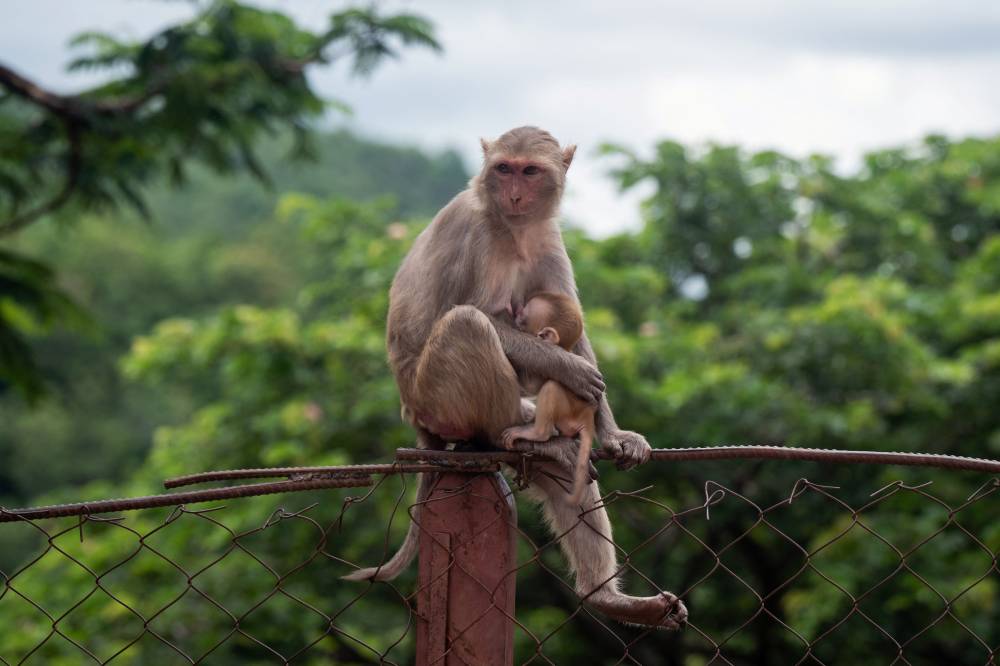
Now the region of rolling fields of sesame, pulses and beans—studded with the golden spires of Buddhist pagodas—is a battle zone.
PDF fighters use homemade mines to ambush military convoys and regularly assassinate local officials accused of working with the junta.
The junta has armed and trained civilian militias and its troops are accused of razing villages and massacring inhabitants suspected of supporting the PDFs.
The warring sides use checkpoints along roads they control to levy “taxes” on travelers.
On the road to neighboring Myingyan district, a group of villagers told AFP to turn back.
“The situation is bad if you go that way,” said one.
In May PDF fighters killed dozens of people, including civilians, in a raid on a promilitary village in Myingyan, according to local media reports.
Days later, north of second city Mandalay, the well-known abbot of a monastery was shot dead by security forces at a checkpoint.

The junta initially blamed PDF fighters, but later said its forces were responsible.
Wish granter
The Taung Kalat shrine honors Popa Maedaw, one of dozens of nats, or guardian spirits, that exist alongside Buddhism in Myanmar.
Devotees believe she has the power to grant wishes.
They also believe she was a flower-eating ogress who turned into a beautiful woman when she fell in love with a royal emissary—and that she later died of heartbreak when the monarch ordered her beloved’s murder.
At the Taung Kalat shrine, a woman from the town of Pyin Oo Lwin made an offering for the success of her small business, holding a wad of notes against her forehead as a priest recited a mantra. Pyin Oo Lwin, about a six-hour drive away, is home to the military’s elite officer training academy.
In recent days ethnic minority fighters have battled junta troops to within around 50 kilometers of the town.

At the base of the shrine, there were few customers to buy the flower offerings, toys or T-shirts set out in stalls.
Some offered slingshots and sticks to ward off the hordes of monkeys that live on Mount Popa and off the donations of pilgrims.
Now pickings are slim, the primates are getting more aggressive, said one vendor selling water and bottles of juice on the stairway.
“When more visitors came here and fed the monkeys, they were fat and strong,” she said.
“They are thin now because not many visitors come.”
AFP is one of the world's three major news agencies, and the only European one. Its mission is to provide rapid, comprehensive, impartial and verified coverage of the news and issues that shape our daily lives.













